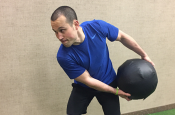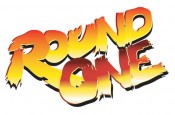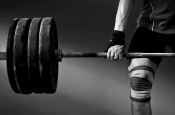Massage-(What, When, and Why)
*Please consult with a medical professional prior to starting any new therapy techniques.
In this day and age, there are so many different kinds of recovery techniques out there. Some of these recovery techniques include massage, acupuncture, cupping, cryotherapy and so many others. With all these techniques out there, it can become quite overwhelming for the average gym goer to choose the one that’s right for him/her. In this post, I will cover what, when, and why a massage can help with your training (from a recovery standpoint). Furthermore, I will highlight each recovery method mentioned every week. On a side note, this is nowhere near an end-all, be-all post on massage but more so my take on what, when, and why it is important to receive a massage and how it can help in conjunction with your workouts.
First off, one thing you have to understand is that everybody is different and the type of massage one receives can vary.
Before I dive into my post, I want to provide a basic definition of the word massage.
Massage: “the rubbing and kneading of muscles and joints of the body with the hands, especially to relieve tension or pain.” (1)

As you all know, there are many different kinds of massages one can receive. This post is not going to cover all the different types of massages but rather provide a basic overview of the benefits of massage therapy.
Massage therapy goes back thousands of years to ancient cultures that believed in its medical benefits. The first record of massage therapy dates back to 2700 B.C. in China and Egypt.
When should I receive a massage?

One should receive a massage on either a recovery (aka non-training) day or post-workout. Receiving a massage post-workout allows the body to relax a bit better and reduce recovery time. Some can argue that a massage post-workout can help get rid of lactic acid. I believe more research has to be conducted to truly understand/know if this is the case. I personally get a massage once every two weeks and when I do, I usually go with a 90-minute massage. My body usually feels a lot better the day after I receive one but again, that’s just me.
Some of you might be wondering what about before a workout..? I personally have not had a massage prior to a workout (such as a sports massage), but I do know that the optimal duration of a massage prior to a workout should be about 10-20 minutes. The reason behind this (in my opinion) is that if you receive a 60-90 minute massage before a workout, it may end up impairing the recovery process which may lead to an increase in soreness, a decrease in overall effectiveness of the massage, and quite possibly an increase in likelihood of injury during your workout.
Why should one get a massage?

Receiving a massage provides multiple health benefits but I am going to cover my top 2 reasons why someone should receive a massage.
– The first reason is that it helps reduce muscle soreness, muscle tightness, and keeps your body flexible and mobile in conjunction with your exercise program. In addition, regular massage therapy can help decrease the likelihood of injury during training. Now I know this is debatable, but I believe massage therapy helps to an extent and my theory is that if you believe that something works, then it most likely will.
– The second reason is that it can help reduce stress and anxiety. Massage is a great way to decrease cortisol levels in the body while increasing levels of serotonin and dopamine.
Throughout history, massage therapy has been used to treat ailments and provide overall wellness for people all over the world. There are several known benefits of receiving a massage such as reducing stress, decreasing muscle soreness and tightness, and many more. Overall, I believe that implementing massage therapy in conjunction with your training program can not only aid in improving one’s physical performance but also provide a healthy outlet for releasing negative feelings such as stress and anxiety.
As always,



























